Unfortunately, the terrible events occurring across the world have prevented the majority of us from spending time outdoors in nature, which is a great location for visiting. Only outside do we experience some of nature’s most amazing and puzzling phenomena, which sends our minds racing. We may still witness some horrifying situations that are beyond our control, even though travel is no longer an option. If your jaw drops as you try to understand how that is possible. Here, you can find the answers to the most perplexing natural mysteries.
Sea Crop Circles
Even while crop rings are intriguing enough to get our attention, what if we told you that the natural world is covered in submerged field rings? Even though these circles were discovered in 1955, experts investigated them for years without coming to any firm conclusions.

Even though aliens were not involved, the riddle was eventually solved. These circular movements appear to be made only by the pufferfish to attract female attention.
China’s Colorful Strange Topography
Whenever you get the opportunity, to visit the colorful landscapes of China, you may see the stunning size of this scenic beauty. You could be wondering where it came from. As it turns out, red sandstone erosion led to the formation of lofty stratified outcrops and isolated tops.

The intriguing structures were mostly shaped by air and rain, with continuous drought and weather playing a little role.
Turkmenistan’s Hell Pit
One of those strange occurrences that must be seen to be believed is this entryway to hell. This fire, which was set by petroleum scientists in 1971, seems to still be burning right now, giving the amount of reserved gas the appearance of being the literal “gates to hell”!

Despite blazing for 50 years, it doesn’t seem like it will go out anytime soon.
Fully Frozen Methane Bubbles
These magnificent methane bubbles are one of nature’s most remarkable phenomena. They form at the bottom of bodies of water, such as Abraham Lake in Canada, where organic materials collect.

when the lake’s high bacteria content starts to break down and produces a significant amount of methane gas. Once this has frozen, magical methane bubbles appear on the surface.
River Beneath The sea
Another thing has happened that we never imagined would. A number of locations all around planet earth, notably in Cenote Angelita city in the Mexican country, have the underwater river. The river appears to have been caused by the hydrogen sulfide deposits which make up what is known as a river beneath the sea.

The halocline, or milky effect, is essentially created when the freshwater of the top and salty deep water mix.
Saber Light Volcano Lightning
you read that right. Some types of volcanoes may also produce lightning, making them much more dangerous and terrifying. This strange phenomenon, known as “dirty thunderstorms,” is caused by volcanic eruptions that result in some insane lightning.

Scientists have made an effort to investigate it, but because you’ve basically merged volcanic magma and electrical power, it seems to be a difficult phenomenon to examine, so they have not been able to hypothesize except on a few things.
The Ocean’s Eye
These ocean eyes typically form as a result of sea level rise and can be found in the Bahamas, Belize, Australia, Guam, and Egypt. Because there is no current and the depth is virtually directly accessible from the shore, the holes are well-liked for freediving.

However, it is risky and has a high fatality rate for divers.
The Tanzanian Lake Natron
Tanzania is home to amazing people, breathtaking scenery, and the enigmatic “Deadly Lake” or Lake Natron. Because of the absurdly high calcium carbonate content of this lake, all living things, including birds and other animals, become cemented.

They calcify and turn into animal mummies. So if you intend to watch this, get ready for a terrible experience.
Ethiopian Blue Volcano
Despite the fact that blue lava and a volcano venting may appear like something from fiction, if you are from Ethiopia or have been there, you may have witnessed this strange phenomenon.

Blue lava, which is often only visible at night, is only seen in a small number of the world’s most complex volcanoes. Essentially, the high sulfur level results in fires that burn blue.
The Maldives’ Bioluminescent Waves
This amazing phenomenon, which is intricate in both its production and name, may usually be seen during a peaceful stroll on the Maldives’ Volcano Island.

When light-emitting phytoplankton in the ocean produces light, calm, warm sea water dazzles with green, blue, or even crimson waves. These bioluminescent waves are also called “magic light” by locals.
The Northern Aurora Lights
The aurora is one of nature’s most captivating spectacles. In essence, an aurora is a display of skylight that is naturally colored.

Electrically charged solar particles interact with various airborne particles like nitrogen or oxygen to create the aurora, which can be seen in the sky as green, yellow, red, or white light.
The Cloud Rays
Even though morning glory clouds are rare, when you do see one, you’ll always remember it. A low-level airwave and a companion cloud are the typical components of the unusual weather event.

After then, many waves unite to form bands of roll clouds, which are visible in different parts of the planet. However, Burketown, a small town in Australia, is where they are most frequently seen.
Natural Steam Kettle InHverir, Iceland
Kids and even adults frequently become completely fixated on playing in the mud! But have you ever thought about the possibility that this sludge might boil and release some sort of steam rays? Although you might wonder if this is a fake, it is in fact true and does exist.

Like many other really unusual events you’ll see on this list, the strange phenomenon typically occurs in Hverir, Iceland.
Clouds With Lenticules
When lenticular clouds form, the troposphere, the lowest layer of the Earth’s atmosphere, faces significant instability. When moist winds blowing over mountains get caught between the peaks and start to blow perpendicularly, they produce lenticular clouds.

These clouds commonly give people the impression that they are unexplained flying objects due to their lens-like shapes. They are usually observed beyond the clouds, though they can occasionally be spotted when there are none.
Ice Caves
Within the ice of a glacier, a temporary phenomenon known as ice caves can form. These random wonders essentially manifest as the glacier cave’s ice melts and forms chambers or luminous shapes.
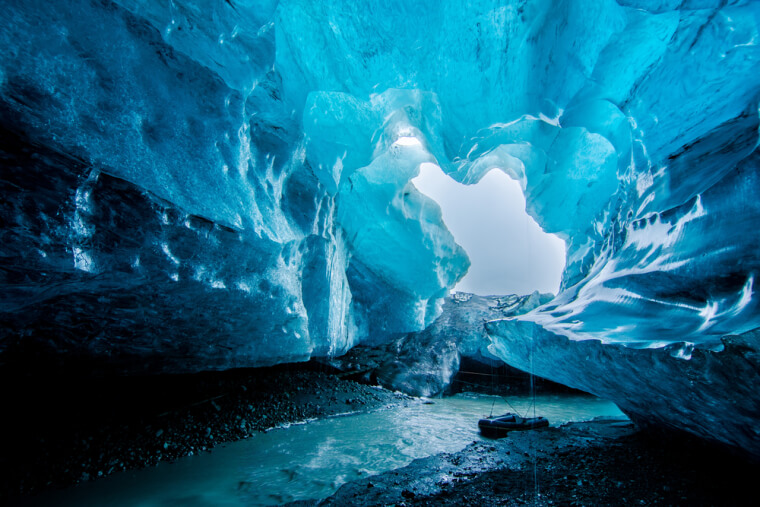
A glacier’s ice cave always forms, creating some of the most magnificent scenery on earth. But they usually disappear after a few days, just like many beautiful things do.
New Zealand’s Ballon Boulders
There are many other natural wonders in New Zealand besides these spherical boulders. Although these perfectly shaped stones could initially lead one to believe that someone created them, they are actually just another work of nature.

The concretion process over millions or even billions of years formed these perfectly sized rocks, commonly known as the Moeraki Boulders.
The Venezuelan Country’s Persistent Storm
The Venezuelan Everlasting Storm is the planet’s most dramatic occurrence if there is such a thing. Occasionally, this chaotic storm will be accompanied by menacing thunder and lightning.

The Venezuelan lake apparently experiences thousands of lightning strikes every half-hour on a good night. The Beacon of Maracaibo in particular has an average of 29 lightning flashes per minute.
The Osoyoos’s Spotted Lake
This multicolored lake in Osoyoos is arguably the dreamiest lake anyone has ever seen. Spots in a lake may seem almost surreal, but they are a peculiar natural phenomenon that happens during the summer as the lake’s highly concentrated, saline water evaporates.
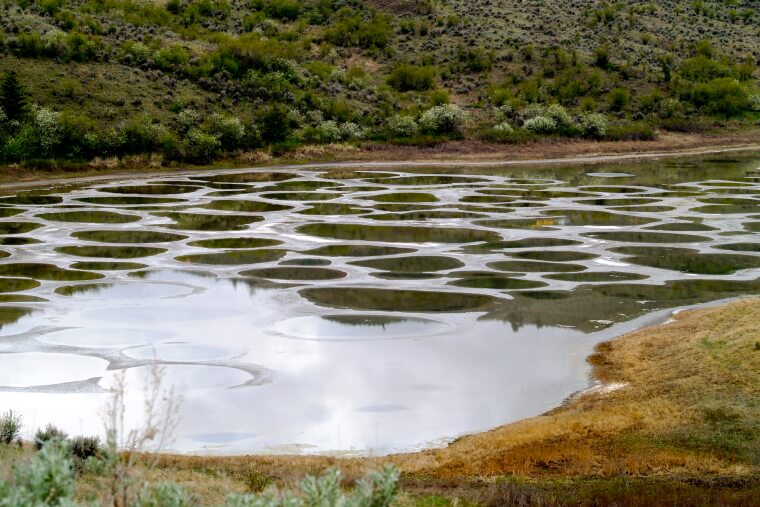
Following this, colored mineral deposits stay in place and produce the breathtaking environment we can see today.
Starling Flocks Of Denmark
You might be wondering what on earth you are witnessing because the starling murmuration is among the rarest natural phenomena in the world. Large groups of starlings known as murmurations glide, twirl, twist, and swirl across the sky, forming stunning, ever-changing clouds.
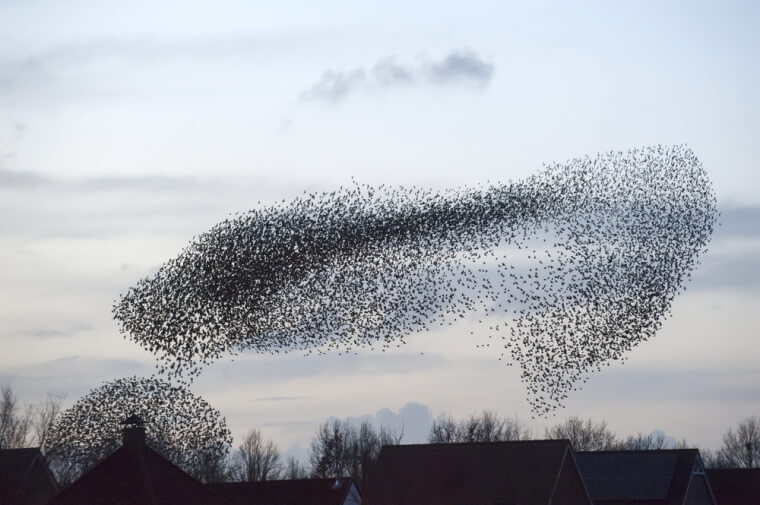
The starlings’ remarkable coordination and communication skills eventually produce spectacular formations in the Danish skies.
Big White Bubbly Clouds
If you ever encounter a Mammatus cloud, you might find it difficult to believe that they actually exist because they are so rare. The strange phenomenon often manifests as hanging pouches made of ice.
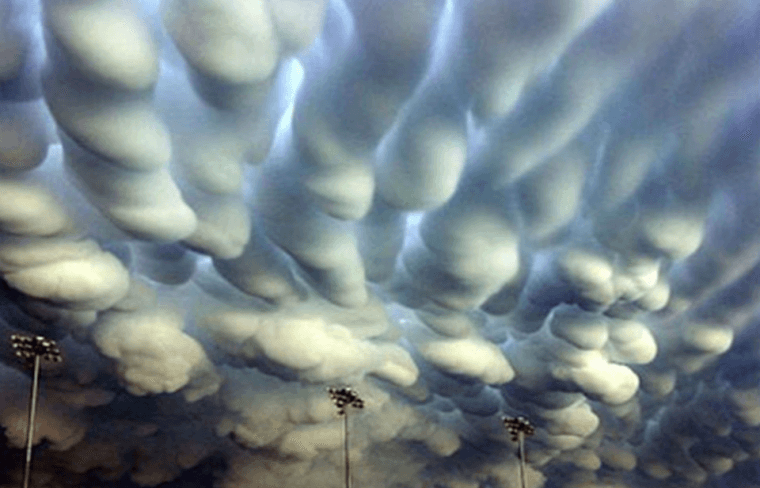
If you ever encounter a mammatus cloud, you might find it difficult to believe that they actually exist because they are so rare. The strange phenomenon often manifests as hanging pouches made of ice.
Namibian Desert’s Fairies
Namibia, in particular its vast and peculiar deserts, is without a doubt a country with some of the most spectacular natural panoramas in the whole world. The grasslands of Namibia are home to the magnificent phenomenon known as a fairy circle.

These sporadic circles, which are remarkably regular in size and spacing, are surrounded by Stipagrotis grasses. They are ubiquitous, surrounded by lush vegetation.
Unsettled Clouds
One of nature’s most peculiar occurrences is the apparatus, or the development of agitated clouds. The clouds haven’t shown up since 2009, despite the best efforts of specialists, when they were last seen.

The first person to find it was Cloud Appreciation Society member Gavin Pretor-Pinney. They usually develop in a configuration like a storm, which makes for an amazing sight.
The Yemeni Dragon Blood’s Tree
The Island of Socotra archipelago near the shore is the only place these rare Yemeni trees can be found. With a beautiful umbrella-like form that is perfect for anybody seeking shade, the dragon-blood tree has a really distinctive look.
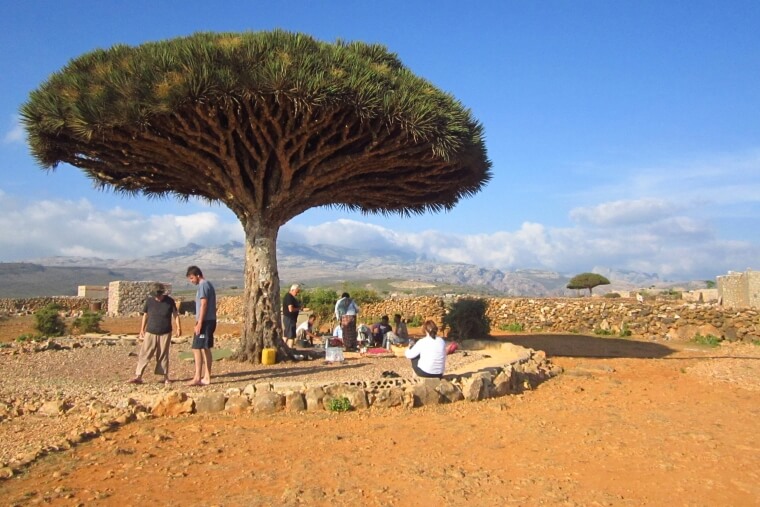
The tree may live for 600 years and grow to a height of more than 30 feet, both of which are extraordinary feats. Sadly, experts believe that the specific species of tree is vulnerable to extinction.
The Salt Mirror Desert
The Salt Desert, commonly known as Salar de Uyuni, is home to the world’s biggest salt flat area. The desert, which covers a radius of more than 10,000 square kilometers, is generally referred to as “heaven on earth” by those who have been lucky enough to see and experience it.
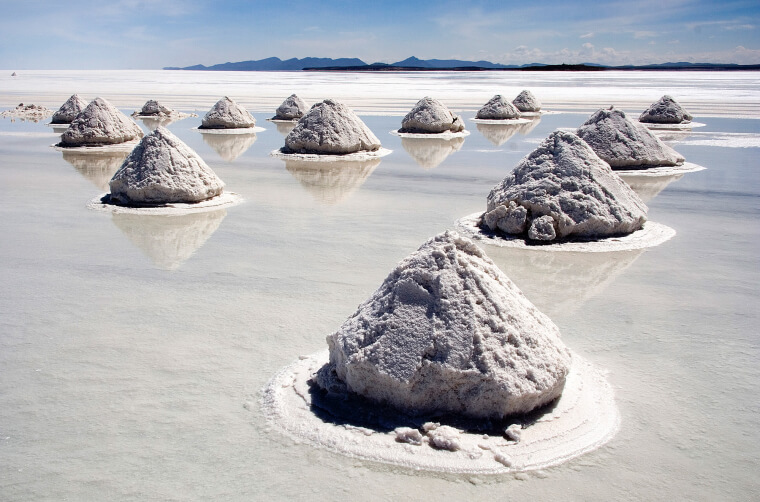
When it rains, a very thin layer of still water transforms into a huge mirror.
Striped Icebergs
We are unable to grumble since this is not the first nor the last time we would ever see such strange events in Antarctica. Striped icebergs are a bit of a stretch because icebergs aren’t the most exotic notion when it comes to Antarctica.

These icebergs with stripes, which may be found in green, blue, yellow, and brown, appear when layers of ice grow under particular circumstances.
Spider Web Snow
We are caught between enthusiasm and anxiety about this one, but it’s still vital to talk about. This spider snow may be seen in the Australian outback and was first observed in 1914.

The phenomenon, which often consists of corrals covered with what appears to be miles of spider webs, is referred to as “spider snow.” Moving spiderlings in search of food are to blame for the occurrence.
Fog Rainbow
The material used to create fogbows, also known as white rainbows, ghost rainbows, or cloud bows, is similar to that used to create regular rainbows with the difference that this one lacks a variety of colors.
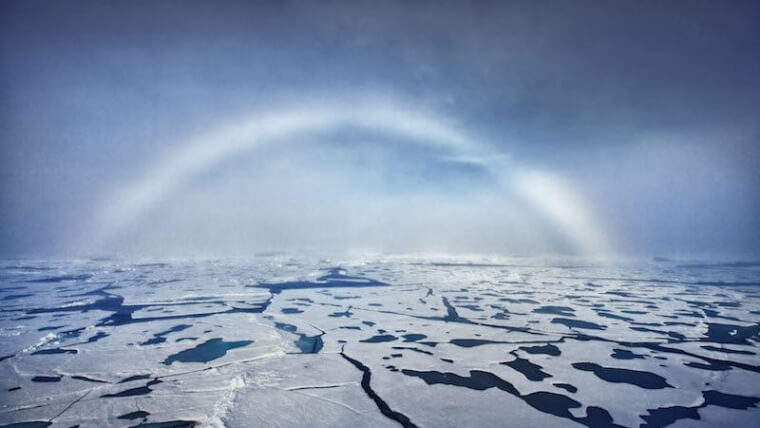
Before the rainbow appears, raindrops cover the sky, and it always faces the opposite direction of the sun. But unlike a conventional rainbow, the fogbow appears white because of the fog droplets that are present.
Colorful Light Pillars In Russia
Cold climates, like those in Russia, usually give us a fresh perspective on the beautiful colors of nature.

The moon’s reflection off of ice crystals produces these light pillars, also known as sun pillars, which come in a variety of vividly colored light columns. This might occur at either the sun’s rising or setting.
Antarctica’s Ice Grows Flowers
As was previously said, Antarctica’s extreme cold has given us yet another spectacular natural phenomenon. On the surface of the water, there are peculiar designs called frosted flowers.
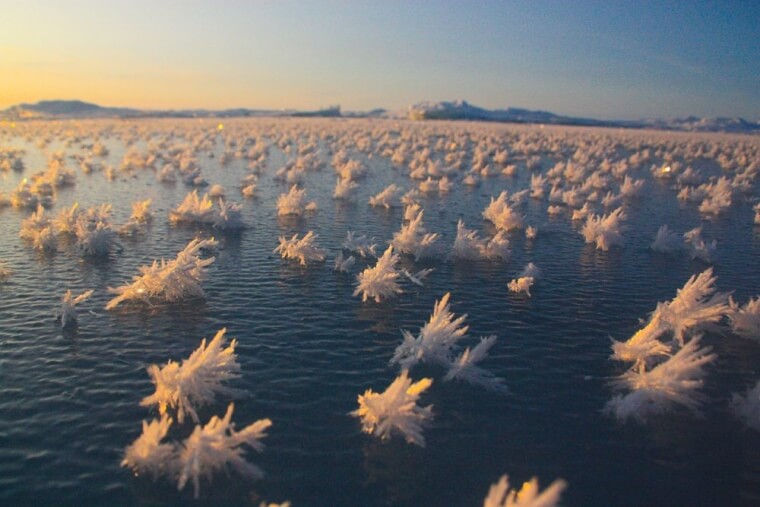
As was previously said, Antarctica’s extreme cold has given us yet another spectacular natural phenomenon. On the surface of the water, there are peculiar designs called frosted flowers.
Columns Jointed Together
A geological structure called columnar jointing, also known as columnar basalt, first gives the impression that it was created by humans. In essence, the facades are a junction of joints, which are little fissures that are tightly spaced.
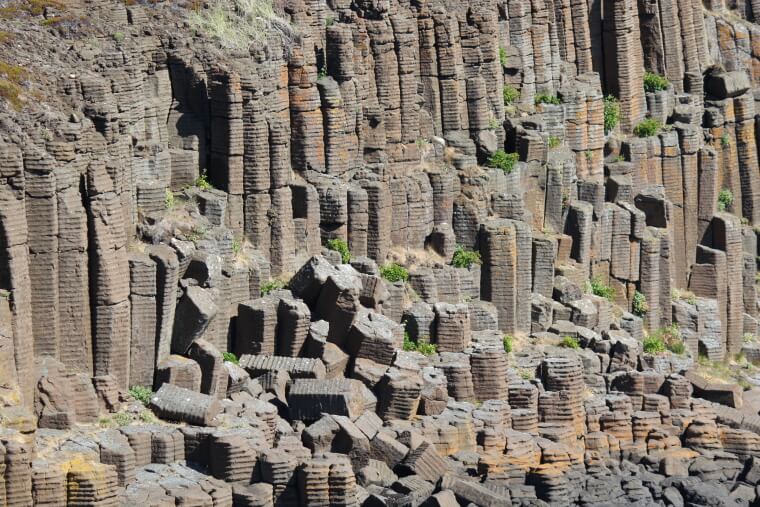
A variety of igneous materials, most frequently volcanic rocks, can develop joints. In essence, once the lava starts to break, the predictable structures we see here are created.
The Bomb Super Storm
Every one of us wants to avoid supercell thunderstorm, which is often found in arid, moist, and high plains areas. Stronger than a tornado, this devastating natural phenomenon has the potential to cause a major catastrophe.
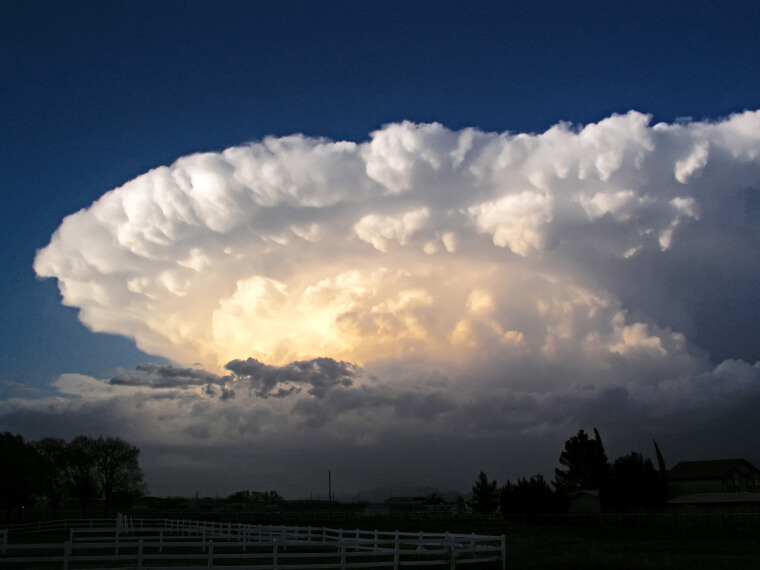
The supercell storm can cause everything around it to be destroyed due to the catastrophic flooding that is caused by the heavy rain.
The Crawling Stones of Death Valley
Even while the concept of these sailing stones might seem bizarre to those of us who have never witnessed it, the amazing phenomenon is really real. These stones are created as the ice melts in the late morning sun, and they can occasionally shatter in incredibly light gusts.

The stones can move over a wide area when there is less friction between them and the soil. Death Valley Park is where one may witness this breathtaking vista.
An Icy Chimney
Who would have guessed that our world might have a snow chimney? This strange occurrence, which frequently causes vast amounts of steam to fill the arctic areas, is a fact. This typically happens in volcanic zones (or areas that are close enough to a volcano).

A volcano’s aperture progressively freezes down and transforms into a chimney-like orifice in colder areas.
Christmas Island Crab
It’s no secret that certain species move in vast herds a few times a year, but the red crab migration is extraordinary. Usually, between October and November, the festival takes place on Australia’s Christmas Island.

You could be on foot or in a car when you suddenly find yourself in the center of a crab-filled red road.
Underwater Tornados
Maelstroms do exist, even if we may have only seen them in science fiction movies and books. With a water speed of more than 20 knots and a flow of more than 3,000 m3, those are actually the strongest maelstrom on the whole planet.

The fact that they can physically suck in people, animals, and smaller items makes it more terrifying.
Blue Ice
Instead of the more prevalent “white as snow” ice, Iceland may have blue ice. When snow accumulates on the glacier, condenses, and blends with it, blue ice sculptures are formed.
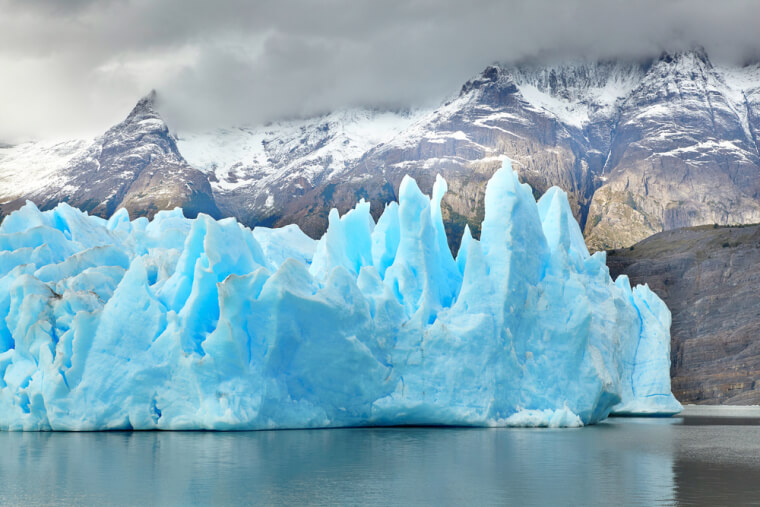
Even while it contains minute amounts of regular ice, that is what gives the ice its blue color.
The Native Colorful Eucalyptus Tree
How frequently do you get to see a gorgeous eucalyptus tree with a variety of vibrant barks? To be precise, almost never. This eucalyptus tree is indigenous to the Philippines and New Guinea, where it predominately thrives in rainforests.

In this instance of a tropical forest, the tree has a multicolored bark that includes maroon, purple, green, blue, and orange.
The Green Horizon Sunsets
The weird occurrence takes place as the sun starts to set, giving us a brief time of an odd green tint. The sun’s rays have the appearance of bending and turning green, although they don’t truly do so.
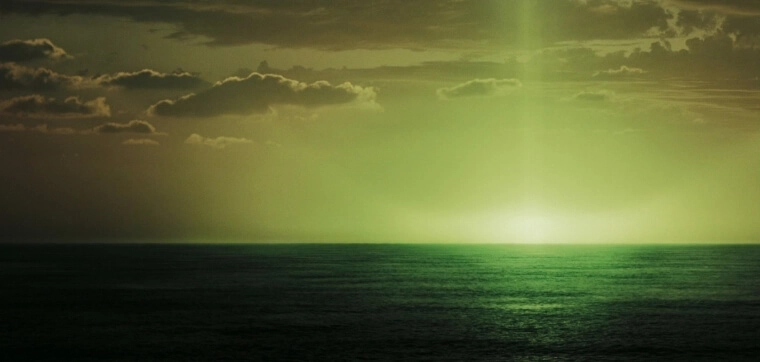
It takes a lot of concentration to even detect the green rays, much less catch them on camera and film them.
The Migration of The Beautiful Monarch Butterflies
Anyone who has the opportunity to witness a rainbow of Monarch butterflies traveling from North America to Mexico is in for a treat. The occurrence often involves the migratory subspecies Danaus plexippus, which occurs twice a year in the fall and spring.

This journey may draw 500,000 monarch butterflies, and it has been put on the list of the most stunning natural spectacles in the world.
Crystal Ice Of Lake Baikal
This brilliant ice may be seen in Lake Baikal, which is a UNESCO World Heritage Site. In actuality, the lake contains 20% or so of the freshwater on the planet.
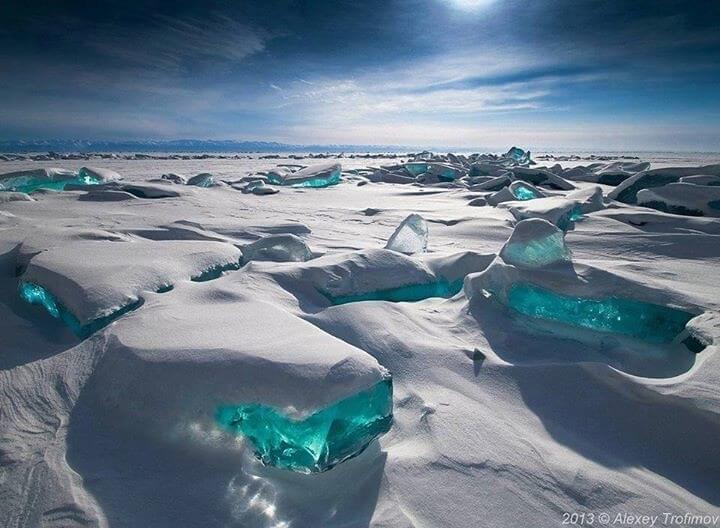
Large chunks of transparent ice build up on the lake’s surface when it freezes in the winter, giving it a turquoise look.
Mermaid Clouds
The arctic areas provide the greatest views of these prismatic clouds, despite the fact that they may not appear to be genuine. Prismatic clouds, popularly known as the “mother of pearls,” are typically only clearly visible around dusk.
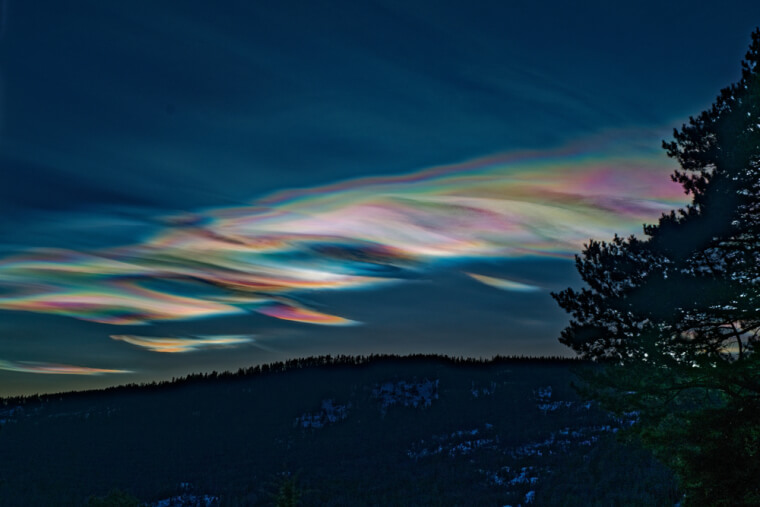
The best times to capture them are at the crack of dawn or just as darkness is ending.
Fire Angel Aura Rainbows
Despite what the name would suggest, these circular rainbows are not made of fire. A band of different colors usually appears above the horizon as a result of the optical phenomenon.

These rainbows are caused by light bending and refracting in a vertical side face as it travels through high-altitude cirrus clouds, despite the mouthful of a name (the “circumhorizontal” arc).
The Glass Cave
Scientists from all over the globe come to Naica, Mexico, to explore this spectacular crystal cave. The cave is 300 meters below ground level and has an extraordinary crystal structure.

Because the subterranean cavern was once again inundated with large amounts of water after mining activities there halted, access to the cave is only permitted by visitors.
The Ice Furr
A kind of ice called hair ice, often referred to as frost beard or ice wool, develops in deadwood and resembles silky, fine hair.
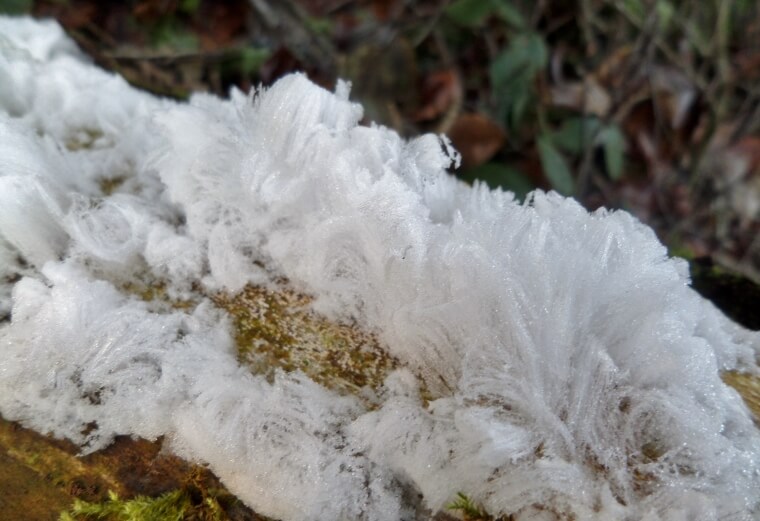
Although the formations are infrequent, it has been shown that broadleaf woodlands with latitudes between 45 and 55 °N have the highest concentration of them. They are commonly visible on leaves and short branches.
The Forest Of Rocky Knives
It is impossible to find somewhere else on earth like Madagascar’s remote and priceless Forest of Rocky Knives.

There are other rocky outgrowths that resemble knives, much like the ones we can see here, in the woods, also known as Tsingy de Bemaraha National Park, which has a surface area of around 666 square meters. This statement uses the word “stingy” to describe the limestone formations seen in stone woodlands.
Alive Stones
Do rocks have life in them? You may ask… There does seem to be a certain species that closely resembles a rock, but it isn’t.

The object that is alive and breathing is a succulent with a very distinctive look. It is often referred to as a pebble plant or a living stone. They evolved over time to resemble very slow-growing rocks and pebbles.
The Amazonian Tidal Sand Waves Or Pororoca
The numerous enigmas that may emerge during an Amazon River flood include the Amazonian tidal bore, sometimes referred to as “Poporoca.” A tidal bore is best exemplified by these apparently unending waves, which occur twice a year.

They can move at speeds of up to 800kmph and reach lengths of up to 4m. All around the nation, surfers like riding them!
The Sardine Marathons
Between May and July, millions of sardines began to migrate from the Agulhas Bank to South Africa.

The run often happens when a torrent of cold water starts to move north from the Agulhas Bank all the way to Mozambique’s breathtaking and distinctive coasts. When they feel threatened, sardines are known to gather.
The Richat Or The Eye Of The Desert
Probably the oddest and most amazing natural phenomenon is the Eye of the Sahara. The enormous dome-shaped structure, which can be seen from orbit and resembles the human eye, is made of rocks that predate life on Earth.

The eye, commonly referred to as the Richat Formation, is an eye-shaped structure that may be found in Western Sahara.
A Sky Punch
The Sky Punch is a sudden hole in the sky, but because it’s difficult to spot, many people think it’s a UFO. In fact, if you live in Ontario, especially in February, you may have already seen this one.

Huge holes are produced by cloud formations in the sheets of clouds above, giving the impression that the entire cloud has been scooped away.
